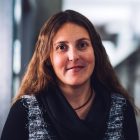Michael Birnbaum will join the Biological Engineering faculty as an assistant professor and become a core member of the Koch Institute for Integrative Cancer Research in January 2016. He received an AB in chemical and physical biology from Harvard and a PhD in immunology from Stanford, where he received the Gerald Lieberman Award given to the school’s most outstanding medical school PhD graduate. Birnbaum’s research combines protein engineering, structural biology, and bioinformatics to understand and manipulate immune-cell responses to antigenic stimuli in cancer and infectious disease. He will teach Course 20’s required sophomore biological thermodynamics subject and assist in creating a new immunoengineering elective.
https://engineering.mit.edu/wp-content/uploads/2016/12/headshot_birnbaum-e1495565732761-330x330.jpg
Website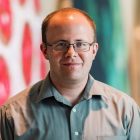
Michael Birnbaum
Biological Engineering #Irmgard Bischofberger will join the faculty in the Department of Mechanical Engineering in January 2016. She received her BS, MS, and PhD in physics from the University of Fribourg in Switzerland, and is currently a postdoc at the University of Chicago. Bischofberger received a Kadanoff-Rice postdoctoral fellowship at the University of Chicago, as well as a Swiss National Science Foundation postdoctoral fellowship, and was a poster prize winner for the APS Gallery of Fluid Motion in 2012. She works in the areas of fluid dynamics and soft-matter physics, with a focus on the formation of patterns from instabilities in fluid and technological systems. In her graduate work, she studied the phase behavior and solvation properties of thermosensitive polymers. As a postdoc, she has discovered “proportional growth” — a new growth pattern that had not been previously observed despite its common occurrence in biological systems.
https://engineering.mit.edu/wp-content/uploads/Irmgard_Bishchofberger_13.gif
Website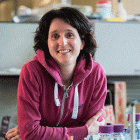
Irmgard Bischofberger
Mechanical Engineering https://engineering.mit.edu/faculty/irmgard-bischofberger/Guy Bresler joined the faculty in July 2015 in both Electrical Engineering and Computer Science and the Institute for Data, Systems, and Society; he will also be a member of the Laboratory for Information and Decision Systems. Bresler received his BS in electrical and computer engineering and an MS in mathematics from the University of Illinois at Urbana-Champaign. He received his PhD from the Department of Electrical Engineering and Computer Science at the University of California, Berkeley, and was subsequently a postdoctoral associate at MIT. He is the recipient of an National Science Foundation graduate research fellowship, a Vodafone graduate fellowship, the Barry M. Goldwater scholarship, and the Roberto Padovani Award from Qualcomm. Bresler’s research interests are at the interface of statistics, computation, and information theory. A current focus is on understanding the relationship between combinatorial structure and computational tractability of high-dimensional inference in graphical and statistical models.
https://engineering.mit.edu/wp-content/uploads/2016/12/headshot_bresler-330x330.jpg
Website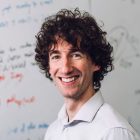
Guy Bresler
Electrical Engineering and Computer Science #Betar Gallant will join the MIT faculty in January 2016 as an assistant professor of mechanical engineering. Gallant completed her BS, MS, and PhD in mechanical engineering at MIT. During her graduate studies with Professor Yang Shao-Horn, she was an National Science Foundation graduate research fellow, an MIT Martin Family Fellow and an MIT Energy Initiative Fellow. Gallant was a Kavli Nanoscience Institute Prize postdoctoral fellow at Caltech, where her research focused on tuning mechanical properties via surface chemistry control in Si-polymer structures for solar fuels applications. She will develop materials and devices for energy and environmental cleanup applications including greenhouse gas and pollutant capture and conversion, which will be informed by the understanding of chemical and electrochemical reaction pathways. She plans to utilize nanoscale insights into heat and mass transfer and energy conversion to bridge molecular control of processes with scalable environmental technologies.
https://engineering.mit.edu/wp-content/uploads/Betar_Gallant_43.gif
Website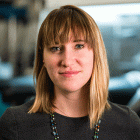
Betar Gallant
Mechanical Engineering https://engineering.mit.edu/faculty/betar-gallant/Ming Guo joined the faculty in Mechanical Engineering in August 2015. He received a BE and ME in engineering mechanics from Tsinghua University, and an MS and PhD from Harvard University. His doctoral research investigated the mechanical and dynamic properties of living mammalian cells, with an emphasis on intracellular mechanics and forces, the mechanics of cytoskeletal polymers, the equation of state of living cells, and the effect of cell volume and intracellular crowding on cell mechanics and gene expression. Guo discovered that there is a direct relationship between cell stiffness and volume. By varying the cell volume through a number of different techniques, he showed that the volume of cells is a much better predictor of their stiffness than any other cue, and he developed a method to measure the mechanical properties and overall motor forces inside living cells by monitoring the fluctuation of microbeads inside the cells and delineating the timescales under which the contribution of active cellular processes could be distinguished from passive mechanical properties.
https://engineering.mit.edu/wp-content/uploads/2016/12/headshot_guo-330x330.jpg
Website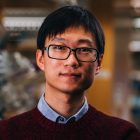
Ming Guo
Mechanical Engineering #Jeehwan Kim joined the Mechanical Engineering faculty in September 2015. He received his BS from Hongik University, his MS from Seoul National University, and his PhD from UCLA in 2008, all of them in materials science. Since 2008, Kim has been a research staff member at IBM’s T.J. Watson Research Center, conducting research in photovoltaics, 2D materials, graphene, and advanced CMOS devices. He has been named a master inventor at IBM for his prolific creativity, with over 100 patent filings in five years. Kim’s breakthrough contributions including: demonstration of peeling of large-area single-crystal graphene grown from a SiC substrate, enabling reuse of the expensive substrate; successful growth of GaN on grapheme, with 25% lattice mismatch and demonstrating that GaN films grown from the process function well as LEDs, pointing to a new principle for growing common semiconductors for flexible electronics; and achieving high efficiency in Si/polymer tandem solar cells and 3D solar cells.
https://engineering.mit.edu/wp-content/uploads/2016/12/headshot_kim-330x330.jpg
Website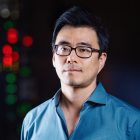
Jeehwan Kim
Mechanical Engineering #Luqiao Liu joined MIT as an assistant professor in Electrical Engineering and Computer Science in September 2015. He received his BS in physics from Peking University and his PhD in applied physics from Cornell University. He received a graduate student fellowship and the Aravind V. Subramaniam T.L. Memorial Award from Cornell. Before joining MIT, Liu worked as a research staff member at IBM’s T.J. Watson Research Center. His research is in the field of spin electronics. In particular, he focuses on nanoscale materials and devices for spin logic, non-volatile memory, and microwave applications. Liu is also a recipient of the Patent Application Achievement Award from IBM.
https://engineering.mit.edu/wp-content/uploads/2016/12/headshot_liu-330x330.jpg
Website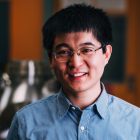
Luqiao Liu
Electrical Engineering and Computer Science #Nuno Loureiro will join the Nuclear Science and Engineering faculty as an assistant professor in January 2016; he will work with the theory group of the MIT Plasma Science and Fusion Center. He earned a degree in physics engineering from Instituto Superior Técnico (IST), Lisbon, and a PhD in plasma physics from Imperial College for analytical and numerical work on the tearing instability. Loureiro held a post-doctoral position at the Princeton Plasma Physics Laboratory, a fusion research fellowship at CCFE, UK, and was awarded an advanced fellowship from the Portuguese Science and Technology Foundation to work at the Institute for Plasmas and Nuclear Fusion (IPFN) at IST Lisbon. In 2012 Nuno was appointed head of the Theory and Modeling Group at IPFN and served as an invited associate professor at the physics department of IST. His research interests cover a broad range of plasma-physics theoretical problems, including magnetic reconnection, the generation and amplification of magnetic fields, turbulent transport in magnetized plasmas, and fast-particle-driven instabilities in fusion plasmas. Loureiro is the 2015 recipient of the American Physical Society’s Thomas H. Stix Award for outstanding early career contributions to plasma physics.
https://engineering.mit.edu/wp-content/uploads/2016/12/headshot_loureiro-330x330.jpg
Website
Nuno Loureiro
Nuclear Science and Engineering #Robert Macfarlane joined the faculty as an assistant professor in the Department of Materials Science and Engineering in summer 2015. He earned his BA in biochemistry at Willamette University and his PhD in chemistry at Northwestern. Macfarlane’s research is focused on developing a set of design principles for synthesizing new inorganic/organic composite materials, where nanoscale structure can be manipulated to tune the emergent physical properties of a bulk material. These structures have the potential to significantly impact energy-related research via light manipulation (e.g. photonic band gaps or plasmonic metamaterials), electronic device fabrication (e.g. semiconducting substrates or data storage devices), and environmental and medical research (e.g. hydrogels for sustained drug delivery).
https://engineering.mit.edu/wp-content/uploads/2016/12/headshot_macfarlane-330x330.jpg
Website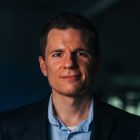
Robert Macfarlane
Materials Science and Engineering #Benedetto Marelli will join the faculty as an assistant professor in the Department of Civil and Environmental Engineering in November. He received a BE and an MS in biomedical engineering from Polytechnic University of Milan and pursued his doctoral studies in materials science and engineering at McGill University. His dissertation focused on the biomineralization of tissue-equivalent collagenous constructs and their use as rapidly-implantable osteogenic materials. As a postdoc at Tufts University, Marelli worked on the self-assembly and polymorphism of structural proteins, particularly silk fibroin. Marelli’s research at MIT will be in the area of structural biopolymers, biomineralization and self-assembly, mechanical and optoelectronic properties of natural polymers, biocomposites, additive manufacturing, and emerging technologies. By combining basic material principles with advanced fabrication techniques and additive manufacturing, he has developed new strategies to drive the self-assembly of structural biopolymers in advanced materials with unconventional forms and functions such as inkjet prints of silk fibroin that change in color in the presence of bacteria or flexible keratin-made photonic crystals. Using biofabrication strategies, his group will design bio-inspired materials that act at the biotic/abiotic interface to reduce or mitigate environmental impact.
https://engineering.mit.edu/wp-content/uploads/Benedetto_Marelli_18.gif
Website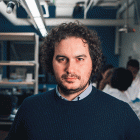
Benedetto Marelli
Civil and Environmental Engineering https://engineering.mit.edu/faculty/benedetto-marelli/Admir Masic joined the faculty as an assistant professor in Civil and Environmental Engineering in September 2015. He received an MSc in inorganic chemistry and a PhD in physical chemistry from the University of Torino, Italy. He was a post-doctoral associate at the Max Planck Institute of Colloids and Interfaces, investigating the structural and mechanical properties of biological materials and received the Young Investigator Award from the German Research Foundation focusing on effects of water on the mechanical properties of collagen-based materials. During his PhD, Masic developed advanced characterization methodologies for the non-invasive study of deterioration pathways in ancient manuscripts, including quantifying the extent of collagen degradation in Dead Sea Scrolls. His research focus is on the development of novel, high-performance, in situ, and multi-scale characterization techniques that are able to overcome current research bottlenecks in the investigation of complex hierarchically organized materials. His work is geared towards investigating the structural and mechanical properties of biological materials, including the study of ageing and pathological processes. He is interested in the degradation and preservation of cultural artifacts, historical buildings, and civil infrastructure.
https://engineering.mit.edu/wp-content/uploads/2016/12/headshot_masic-330x330.jpg
Website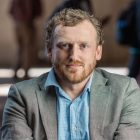
Admir Masic
Civil and Environmental Engineering #Julia Ortony will join the Department of Materials Science and Engineering faculty in January 2016. She earned her BS in chemistry at the University of Minnesota and her PhD in materials chemistry at the University of California, Santa Barbara. Ortony’s research interests are in two main areas: the design and optimization of soft materials with nanoscale structure for important new technologies, and the development of advanced instrumentation for measuring conformational and water dynamics analogous to molecular dynamics simulations. By combining these thrusts, technologies ranging from biomedical therapies to energy materials will be explored with special consideration paid to molecular motion.
https://engineering.mit.edu/wp-content/uploads/2016/12/headshot_ortony-330x330.jpg
Website
Julia Ortony
Materials Science and Engineering https://engineering.mit.edu/faculty/julia-ortony/Serguei Saavedra will join the faculty in January 2016 as an assistant professor in Civil and Environmental Engineering. He received a PhD in engineering science from Oxford University. For the past four years he has been working as a postdoctoral fellow at the Department of Integrative Ecology at Doñana Biological Station in Spain, at the Department of Environmental Systems Science at ETH, and at the Institute of Evolutionary Biology and Environmental Studies at the University of Zurich. Saavedra works in the area of community ecology, developing quantitative methods to understand the factors responsible for sustaining large species interaction networks. His work has revealed significant connections between the structure of these networks and the range of conditions leading to species coexistence. He has established foundations to study the response of these networks to the effects of environmental change. Saavedra’s work also has applications to sustainability in large socioeconomic systems.
https://engineering.mit.edu/wp-content/uploads/2016/12/headshot_saavedra-330x330.jpg
Website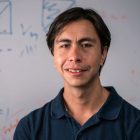
Serguei Saavedra
Civil and Environmental Engineering #Justin Solomon will join the faculty as an assistant professor in Electrical Engineering and Computer Science by July 2016. He is currently an NSF mathematical sciences postdoctoral research fellow in applied math at Princeton University. He earned his MS and PhD in computer science from Stanford University, where he also earned a BS in mathematics and computer science. Solomon is a past recipient of the Hertz Foundation fellowship, a National Science Foundation graduate fellowship, and the National Defense science and engineering graduate fellowship. His research focuses on geometric problems appearing in shape analysis, optimization, and data processing, with application in computer graphics, medical imaging, machine learning, and other areas. He taught classes on numerical analysis, computational differential geometry, and computer science at Stanford. His textbook, Numerical Algorithms, was released in 2015 (CRC Press).
https://engineering.mit.edu/wp-content/uploads/2016/12/headshot_solomon-330x330.jpg
Website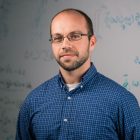
Justin Solomon
Electrical Engineering and Computer Science #Cem Tasan will join the faculty in the Department of Materials Science and Engineering in January 2016. He holds a BSc and MSc from Middle East Technical University, both in metallurgical and materials engineering, and a PhD from Eindhoven University of Technology in mechanical engineering. Tasan was previously a group leader in adaptive structural materials at the Max-Planck-Institut für Eisenforschung, where he had also been a post-doc working on micro-plasticity at phase boundaries of multi-phase steels. He explores the boundaries of physical metallurgy, solid mechanics, and analytical microscopy in order to provide structural materials solutions to environmental challenges. His interests in micro-mechanically guided design of damage-resistant alloys and simulation-guided design of healable alloys have many applications for problems in energy and the environment.
https://engineering.mit.edu/wp-content/uploads/2016/12/headshot_tasan-330x330.jpg
Website
Cem Tasan
Materials Science and Engineering http://www.example.comCaroline Uhler joined the Department of Electrical Engineering and Computer Science and the Institute for Data, Systems, and Society as an assistant professor in October 2015. She holds an MSc in mathematics, a BSc in biology, and an MEd in high school mathematics education from the University of Zurich. She obtained her PhD in statistics, with a designated emphasis in computational and genomic biology, from the University of California, Berkeley. She is an elected member of the International Statistical Institute, and she received a Sofja Kovalevskaja Award from the Humboldt Foundation and a START Award from the Austrian Science Fund. After a semester as a research fellow in the program on “Theoretical Foundations of Big Data Analysis” at the Simons Institute at UC Berkeley and postdoctoral positions at the Institute of Mathematics and its Applications at the University of Minnesota, and at ETH Zurich, she joined IST Austria as an assistant professor. Her research focuses on mathematical statistics, in particular on graphical models and the use of algebraic and geometric methods in statistics, and its applications to biology.
https://engineering.mit.edu/wp-content/uploads/2016/12/headshot_uhler-330x330.jpg
Website